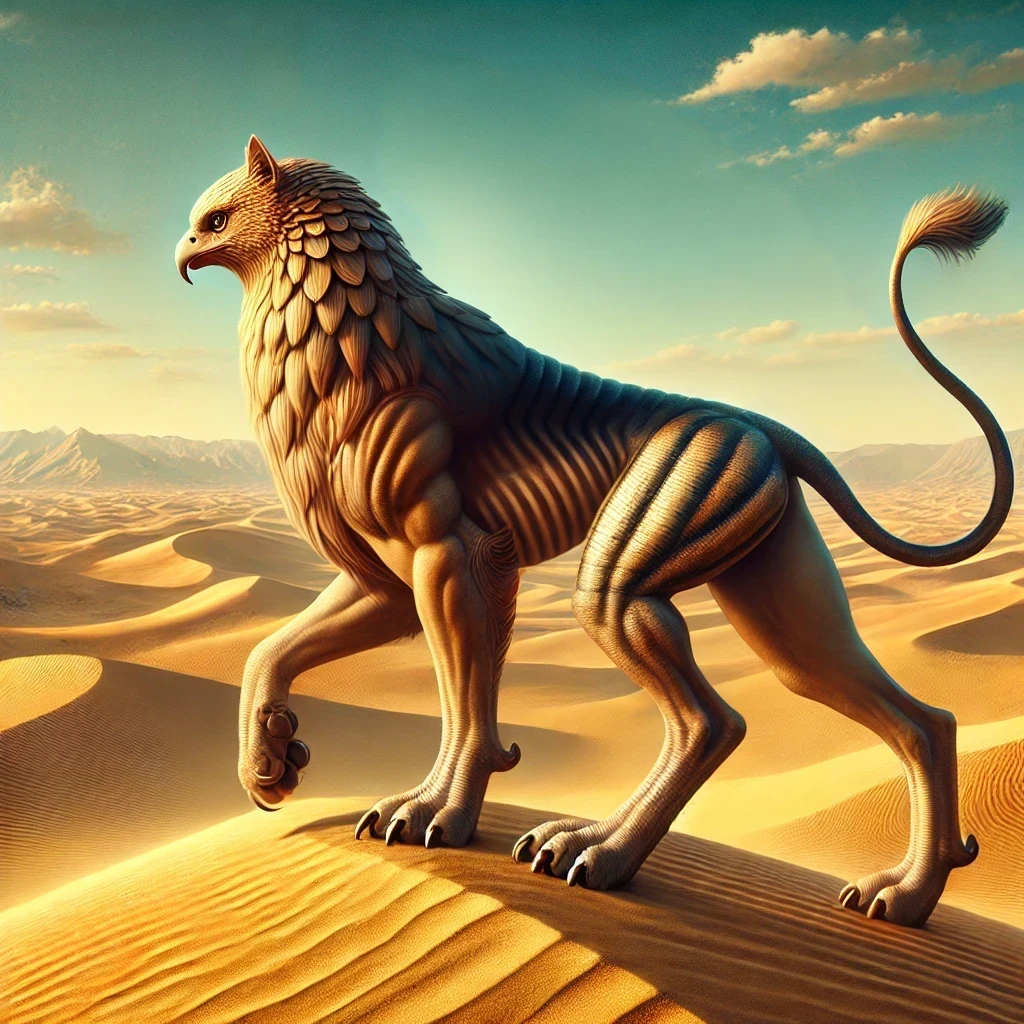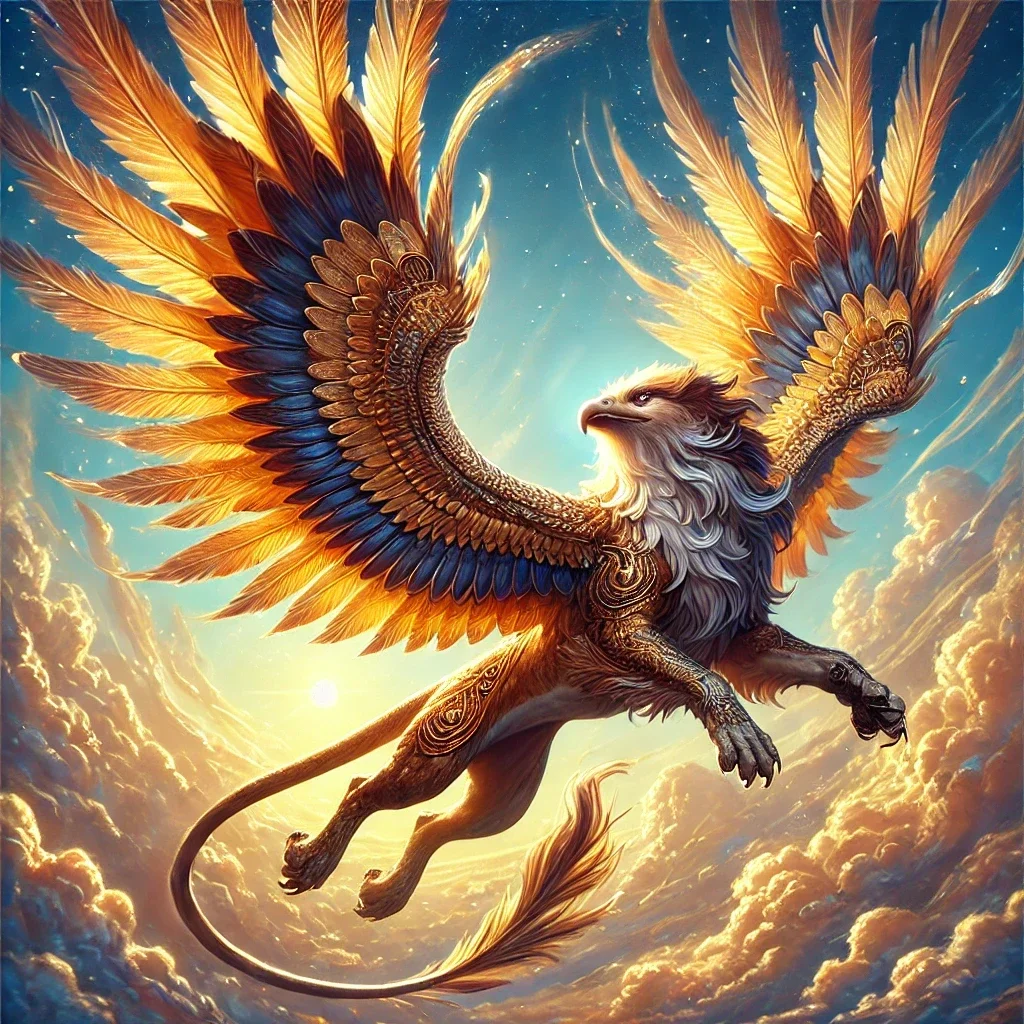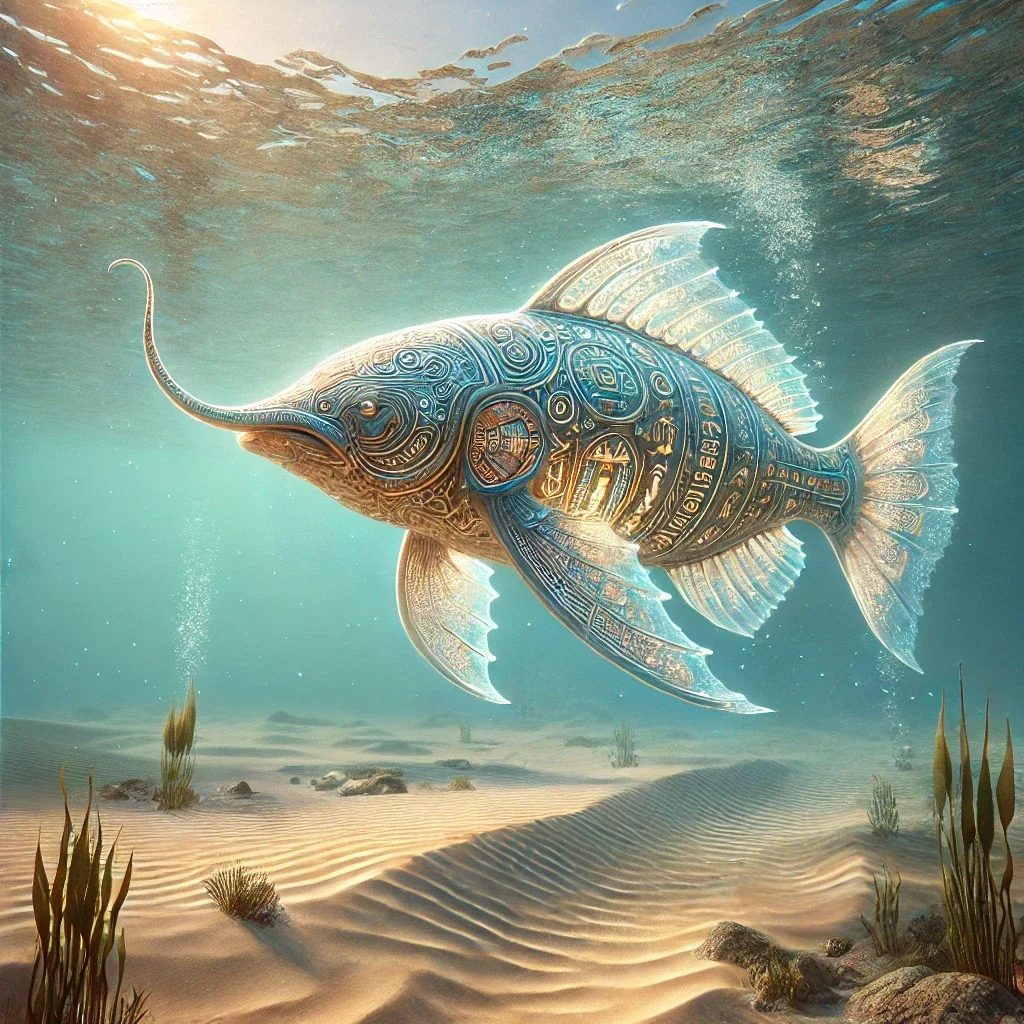The Hieracosphinx is a fascinating creature of ancient Egyptian mythology, combining the features of a hawk and a lion. Known for its regal and enigmatic presence, it holds a unique position in the pantheon of mythical beings. The creature is often depicted as a guardian of sacred spaces, embodying strength, vigilance, and divine authority.
Historical & Cultural Background
The Hieracosphinx, a composite creature with the body of a lion and the head of a hawk, traces its origins back to ancient Egypt, a civilization renowned for its rich tapestry of myths and legends. The concept of hybrid creatures was prevalent in Egyptian art and religious beliefs, reflecting the ancient Egyptians’ deep connection to both the natural world and the divine.
Early Representations
The earliest known depictions of this creature can be found in temple reliefs and tomb inscriptions dating back to the New Kingdom period (1550–1069 BCE). These images often portrayed it as a protector of pharaohs and sacred spaces. Inscriptions from the Temple of Karnak, for instance, describe the creature as a guardian that embodies the dual virtues of strength and foresight.
Evolution Over Time
Over the centuries, the symbolism of the Hieracosphinx evolved. While initially associated with protection and divine kingship, later interpretations expanded its role to include judgment and the afterlife. Greek historians, including Herodotus, noted the presence of sphinx-like figures in Egypt, marveling at their symbolic significance.

Myths & Legends
The Hieracosphinx appears in several ancient myths, often as a guardian or emissary of the gods. One popular story involves the creature safeguarding the gates of the underworld, ensuring that only the righteous could pass through.
The Tale of the Sun God
In one legend, the hawk-headed lion serves as a companion to Ra, the sun god, guiding his solar barque through the perilous journey of the night. The hawk’s head symbolizes Ra’s connection to the sky, while the lion’s body represents terrestrial power, making it a perfect intermediary between worlds.
Symbolism & Meaning
The creature’s dual nature makes it a powerful symbol in ancient Egyptian culture. Its lion body signifies strength and dominance, while its hawk head represents vision, divine authority, and a connection to the heavens.
Religious Symbolism
In religious contexts, it often appears as a guardian of temples and tombs. Its imposing form deterred intruders and signified the sacredness of the spaces it protected. Priests would invoke it in rituals, seeking its protection and guidance.
Royal Symbolism
For the pharaohs, the creature symbolized their divine right to rule. By associating themselves with this creature, rulers emphasized their strength and foresight, qualities deemed essential for governance.
Modern Interpretations
In modern times, the creature has inspired artists and writers, often symbolizing the balance between earthly power and spiritual insight. It continues to capture the imagination of those fascinated by ancient mythology.

Associated Environments
The Hieracosphinx is often linked to sacred or forbidden spaces, emphasizing its role as a guardian. These environments include:
Desert Temples
The hawk-headed lion is frequently depicted at the entrances of desert temples, symbolizing protection and the transition between the mortal and divine realms.
Tomb Complexes
In burial sites, it served as a sentinel, guarding the deceased’s journey to the afterlife. Its presence ensured that only those who respected the sanctity of the tomb could approach.
Powers & Abilities
The Hieracosphinx is endowed with supernatural attributes that underscore its role as a powerful guardian.
Physical Strength
With the body of a lion, it possesses immense strength, capable of overpowering any threat to its sacred charge.
Divine Insight
The hawk head grants the creature unparalleled vision and foresight, symbolizing its ability to discern truth and detect danger from afar.
Protective Aura
Ancient texts describe it as emitting a protective aura, warding off evil spirits and malevolent forces.
Connections to Other Creatures
The Hieracosphinx shares similarities with other mythological beings, highlighting its place in a broader mythological framework.
The Androsphinx
Unlike the Hieracosphinx, which has a hawk’s head, the Androsphinx features a human head. Both creatures serve as guardians, but their differing attributes reflect unique symbolic roles.
The Griffin
The Griffin, a creature with the body of a lion and the head and wings of an eagle, parallels the Hieracosphinx in its hybrid nature. However, the Griffin’s associations often lean toward wealth and prosperity, contrasting with the Hieracosphinx’s focus on protection and divine authority.
Interesting Facts & Curiosities
- The name “Hieracosphinx” derives from the Greek words for “hawk” (hierax) and “sphinx.”
- Hieracosphinx statues were often placed in pairs at temple entrances.
- Some scholars believe it inspired similar creatures in Greek and Roman mythology.
- The creature’s hawk head is a direct reference to Horus, the Egyptian god of the sky.
- Hieracosphinxes appear in Egyptian amulets, believed to provide protection.
- Unlike other sphinxes, it rarely has wings in traditional depictions.
- Its dual nature symbolizes the balance between earthly power and divine wisdom.
Frequently Asked Questions
What does the Hieracosphinx symbolize? It symbolizes strength, protection, and divine authority. Its dual nature reflects the balance between earthly and spiritual power.
Where is the Hieracosphinx depicted? It is commonly depicted in temple reliefs, tomb inscriptions, and sculptures, particularly in ancient Egyptian sites.
Is the Hieracosphinx unique to Egypt? While it originates in Egypt, similar hybrid creatures appear in Greek, Roman, and Mesopotamian mythology, though with different attributes and symbolism.
What is the difference between a Hieracosphinx and a Griffin? The Hieracosphinx has the head of a hawk and the body of a lion, while the Griffin features an eagle’s head and wings. Their symbolic roles also differ, with the Hieracosphinx emphasizing protection and the Griffin wealth.
Are Hieracosphinxes considered benevolent? Yes, it is generally seen as a protective and benevolent entity, guarding sacred spaces and guiding the righteous.
Why does the Hieracosphinx have a hawk head? The hawk head represents divine insight and a connection to Horus, the sky god, emphasizing the creature’s celestial attributes.
Do Hieracosphinxes appear in modern media? Yes, it has inspired various modern artworks, games, and literature, often symbolizing mystery and power.
What materials were used for Hieracosphinx statues? It statues were typically carved from limestone or granite, materials associated with durability and sanctity.
Can the Hieracosphinx be considered a god? While not a deity, it is closely associated with divine power and often serves as an emissary or protector of the gods.



